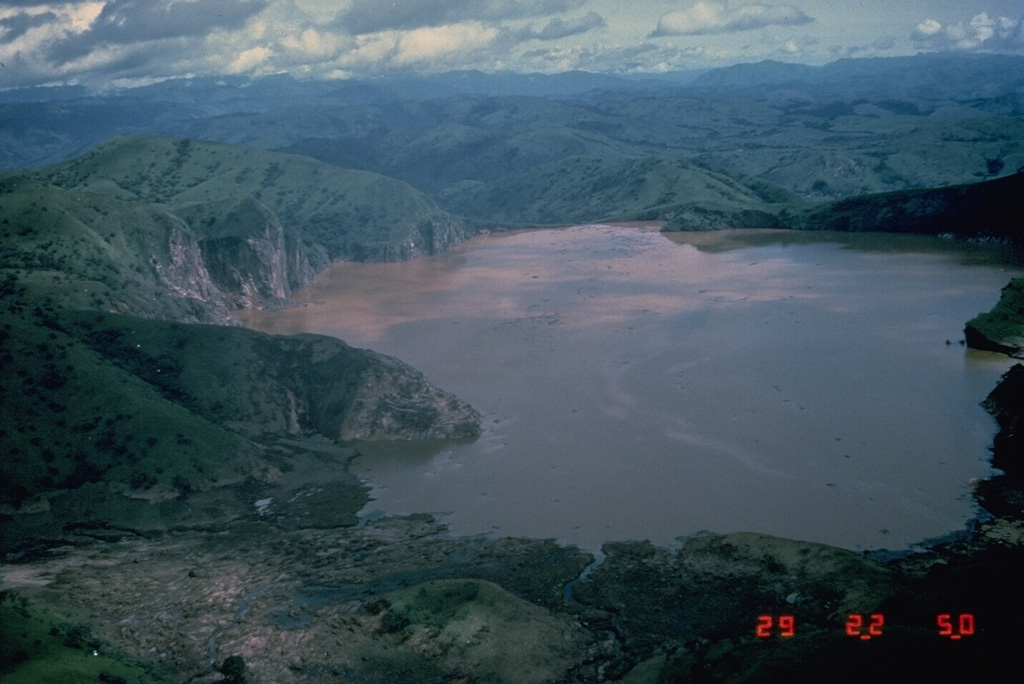Image GVP-00264

Lake Nyos is the most renowned of the numerous maars and basaltic cinder cones associated with the deeply dissected Mount Oku massif. The 1.2 x 1.9 km wide lake, seen here from the south, was the site of a gas-release event on 21 August 1986 that caused at least 1,700 fatalities. Wave damage stripped the peninsula at the left of vegetation. The emission of around 1 km3 of magmatic carbon dioxide has been attributed to either non-volcanic overturn of stratified lake waters, to phreatic explosions, or to injection of hot gas into the lake.
Photo by Jack Lockwood, 1986 (U.S. Geological Survey).
![]() This image is made available as a Public Domain Work, but proper attribution is appreciated.
This image is made available as a Public Domain Work, but proper attribution is appreciated.
Galleries: Craters
Keywords: crater | crater lake

Oku Volcanic Field
